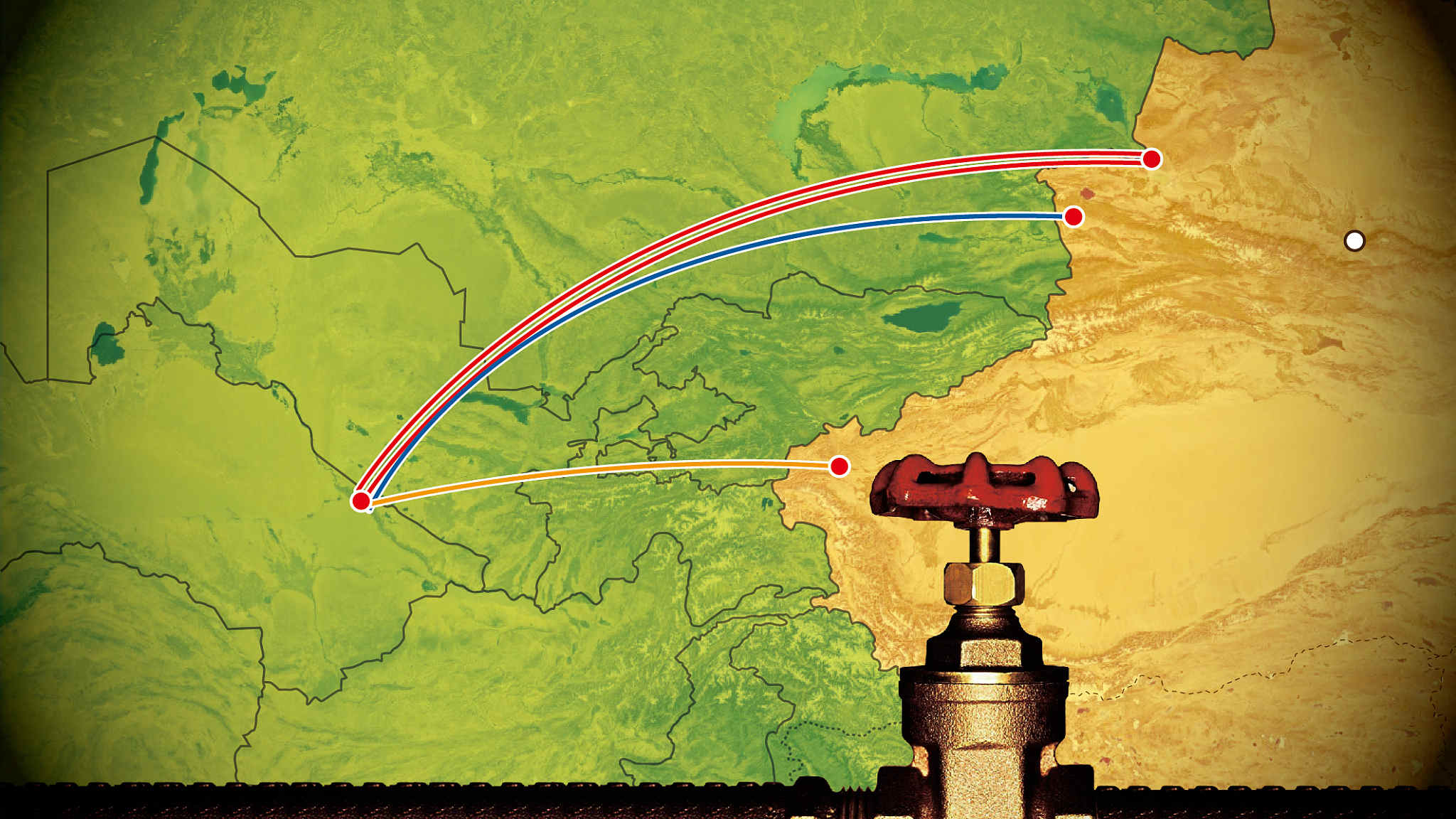Editor’s note: This article is based on an interview with Xing Guangcheng, the director of the Research Center for Chinese’s Borderland History and Geography at the Chinese Academy of Social Sciences, and Liu Huaqin, the head of the Chinese Academy of International Trade and Economic Cooperation of the Ministry of Commerce of China. The article reflects the experts’ opinions, and not necessarily the views of CGTN.
Although some western media outlets often criticize the Shanghai Cooperation Organization (SCO) as unproductive, the Chinese government sees it as an important platform to deepen regional trade cooperation and maintains financial support to the SCO.
The regional political, economic and security organization was established in Shanghai on June 15, 2001. There are now eight full members – China, four Central Asia countries (Kazakhstan, Kyrgyzstan, Tajikistan, and Uzbekistan), Russia and newest members India and Pakistan, who officially joined in 2017.
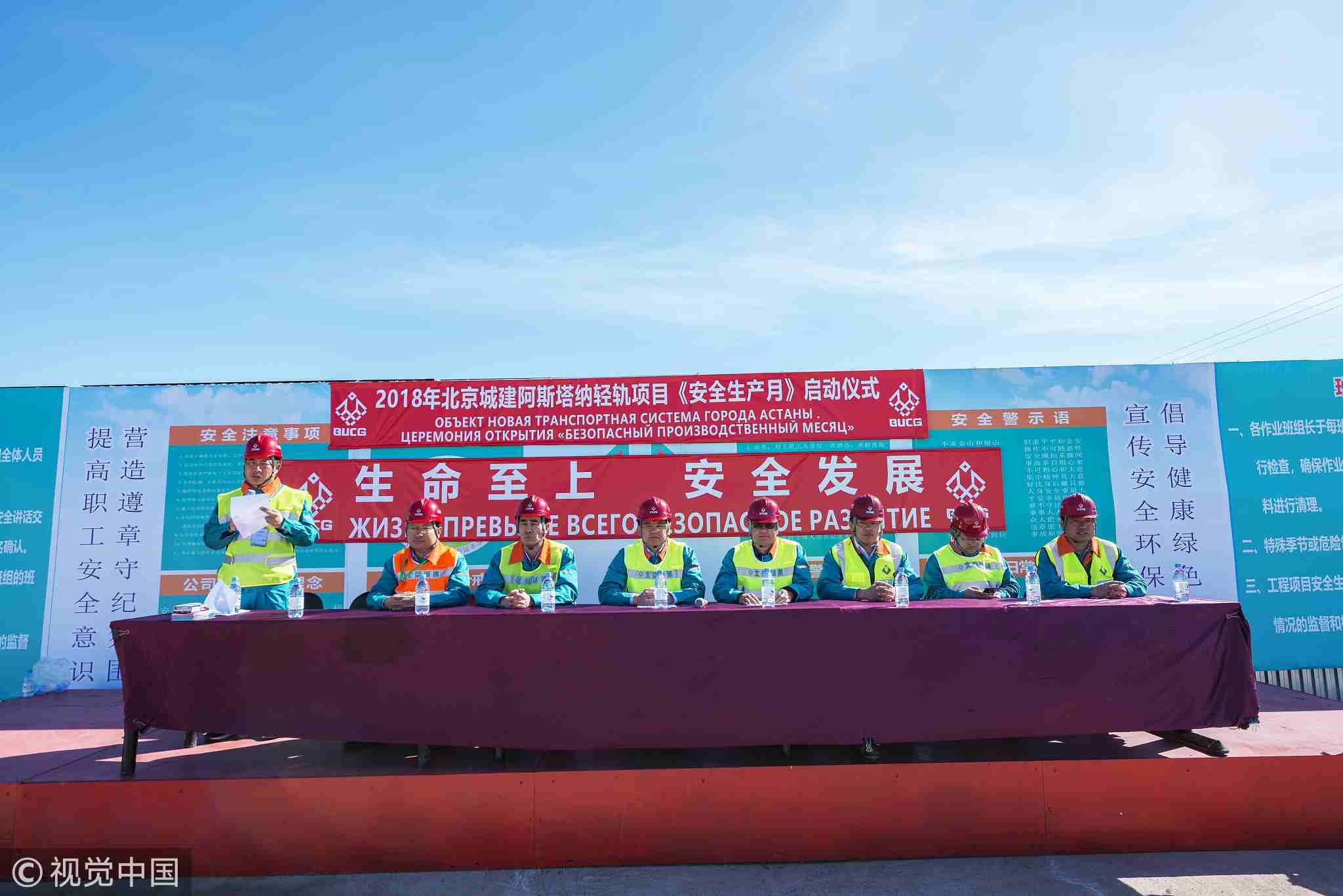
The picture shows the Chinese workers, who built the light rail in Astana, Kazakhstan, on June 5, 2018. /VCG Photo.
The picture shows the Chinese workers, who built the light rail in Astana, Kazakhstan, on June 5, 2018. /VCG Photo.
Central Asia is referred to as "the stans, countries located in the same region and have names ending with the Persian suffix "-stan," including Kazakhstan, Kyrgyzstan, Tajikistan, Turkmenistan, and Uzbekistan.
As we can see, among all the full members in the SCO, Central Asian countries take up to 50 percent.
In terms of developing the trading relationship with Central Asia, why does China value the SCO so much?
China is the main trading partner of Central Asian countries.
According to the report released by China's Commerce Ministry, China was the largest trading partners of Uzbekistan and Kyrgyzstan in 2017, with the trade with China accounting for 18.4 percent of Uzbekistan’s foreign trade (4.961 billion US dollars) and 25.5 percent of Kyrgyzstan’s (1.598 billion US dollars).
Last year, China was also the top trading partner of Turkmenistan and the second largest trading partner of Kazakhstan. Though China is the third largest trading partner of Tajikistan, it was the largest foreign investor in Tajikistan in 2017.
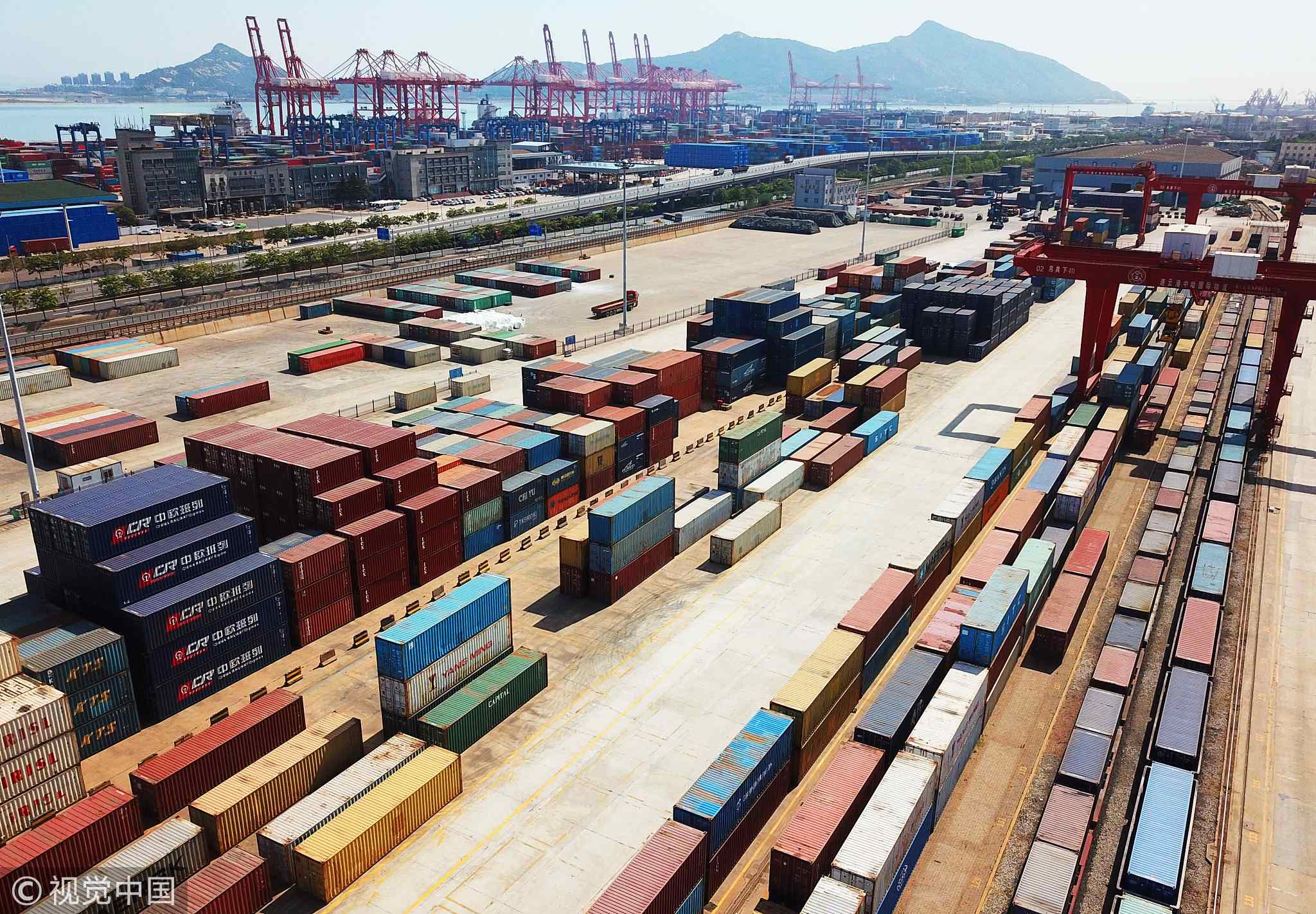
The Lianyungang International Logistics Cooperation base in Jiangsu Province, China. It was jointly built by China and Kazakhstan as a demonstration base for the Belt and Road Initiative. /VCG Photo.
The Lianyungang International Logistics Cooperation base in Jiangsu Province, China. It was jointly built by China and Kazakhstan as a demonstration base for the Belt and Road Initiative. /VCG Photo.
The figures represent willingness of both China and Central Asia to develop trade relationships.
China calls for trade cooperation with Central Asia for two reasons
First, as a neighbor, China is interested in buying Central Asia’s oil and natural gas. China is the largest oil importer in the world. To ensure energy security, China has a need for a diversity of sources, while Central Asia possesses large volumes of oil and gas and plays an important role in the global energy market.
Second, the SCO is critical for China’s Belt and Road Initiative. “The overlapping geographies of the SCO and China’s Belt and Road Initiative are up to one-third of China’s Belt and Road Initiative covering countries, doing a good job in the economic and trade relations of the SCO will lead to a success of the Belt and Road Initiative,” Liu Huaqin, the head of Chinese Academy of International Trade and Economic Cooperation of Ministry of Commerce of China, told CGTN.
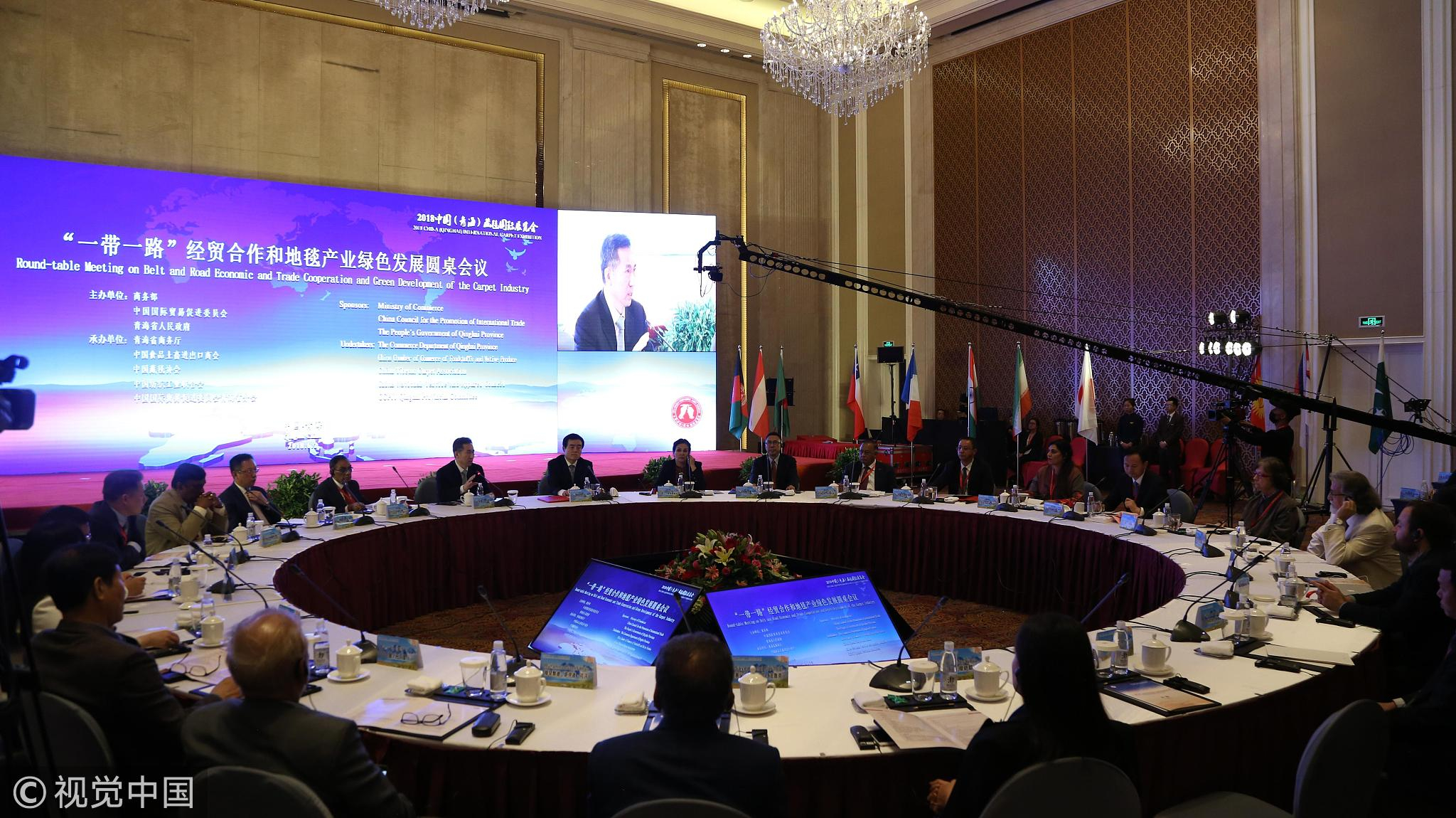
On June 2, 2018, at the " Belt and Road" economic and trade cooperation and carpet industry green development roundtable meeting held in Xi'an, multinational officials stated that they would like to use the "blanket" as a medium to strengthen Silk Road economic and trade cooperation with China. /VCG Photo.
On June 2, 2018, at the " Belt and Road" economic and trade cooperation and carpet industry green development roundtable meeting held in Xi'an, multinational officials stated that they would like to use the "blanket" as a medium to strengthen Silk Road economic and trade cooperation with China. /VCG Photo.
Meanwhile, Central Asian countries also want to cooperate with China to boost trade and reduce poverty. As landlocked countries, they must pass through other nations to reach the sea or beyond their neighbors. “In the past, the five countries in Central Asia could only go west through Russia to export,” Liu Huaqin said. “Now, they can go eastwards to China with the SCO.”
Xing Guangcheng supported her opinion and pointed out, “Central Asian countries do have the willingness to take China’s express train to boost their economy.”
Although Central Asian countries have very close relationships with Russia, nobody will reject other chances to earn money, especially a buyer who comes with a better offer.
There is a need for a bridge between China and Central Asia.
China and Central Asia are geographically connected. But, it is sensitive to build up cooperation between two sides since Central Asia was controlled by the former Soviet Union before and is still heavily influenced by Russia.

A special worker, the intelligent robot, on display in the SCO's Qingdao Summit News Center on June 5, 2018. /VCG Photo.
A special worker, the intelligent robot, on display in the SCO's Qingdao Summit News Center on June 5, 2018. /VCG Photo.
“Whenever China tries to deepen the relations with these countries, Russia feels that China is entering its sphere of influence,” Xing Guangcheng said. “Although Russia admitted that these five countries are independent countries now, it still treats Central Asia as its backyard.”
It is tricky for China to manage its relationship with Central Asia under the nose of Russia, while China is also seeking to keep steady ties with Russia.
“Without irritating Russia, the SCO acts as a significant tie between China and Central Asia,” Xing Guangcheng, the director of the Research Center for Chinese’s Borderland History and Geography in Chinese Academy of Social Science, told CGTN.
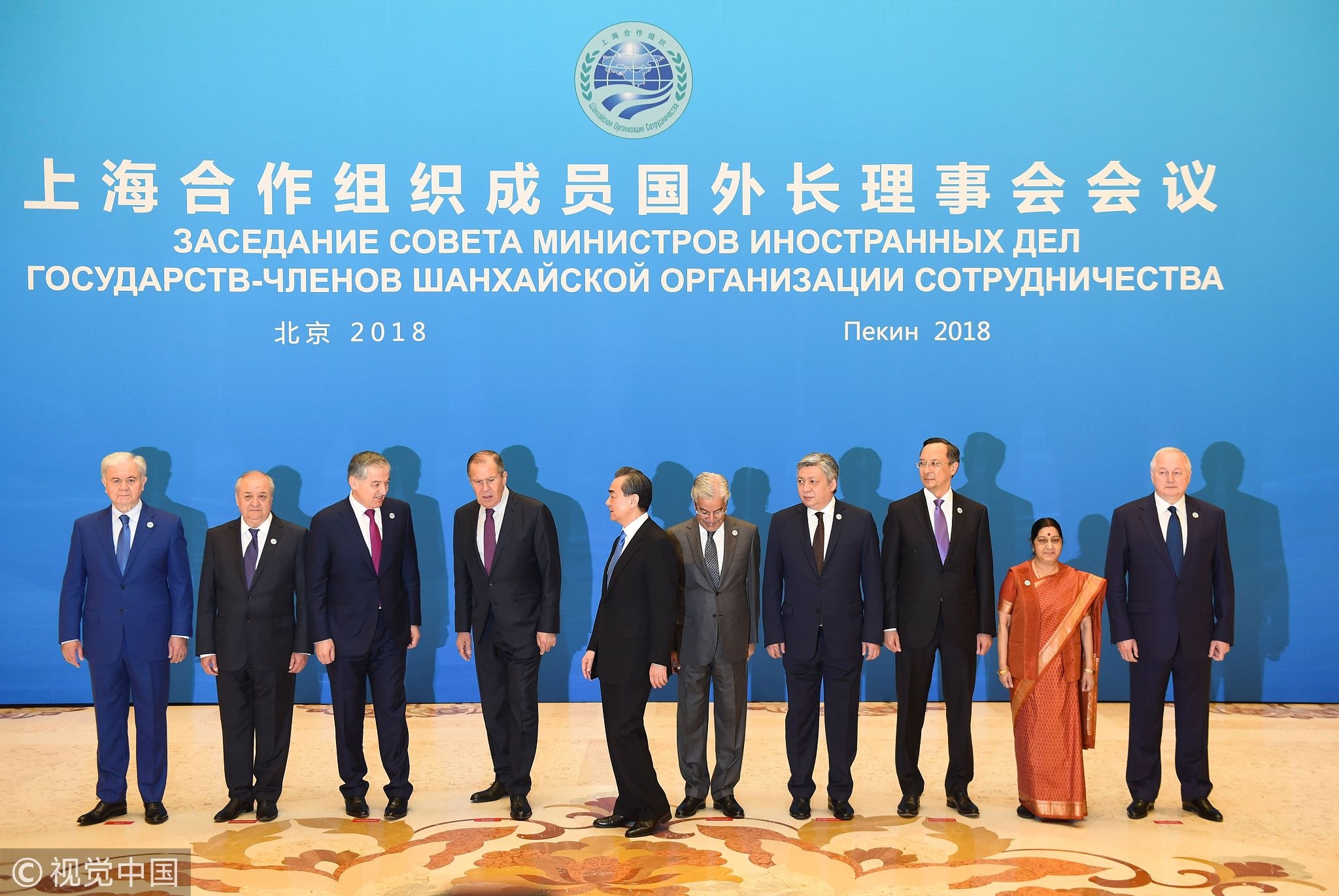
Foreign ministers and officials of SCO countries pose for a group photo before a meeting at the Diaoyutai State Guest House in Beijing on April 24, 2018. /VCG Photo.
Foreign ministers and officials of SCO countries pose for a group photo before a meeting at the Diaoyutai State Guest House in Beijing on April 24, 2018. /VCG Photo.
Among all the fields, the trade field is the most sensitive one between China and Central Asia, for China has stronger economic strength than Russia. Russia is afraid of losing control of this area. This also explains why the SCO has more fruit on regional security but less result on trade cooperation.
But in the big picture, the SCO has significantly contributed to China and Central Asia’s economic relationship without irritating Russia for many years.
Though it is difficult to settle a cooperation deal within the SCO, the organization offers a platform for China and Central Asia countries to contact and talk to each other. Based on the good relationship with Central Asia through the SCO, China has developed bilateral cooperation with the five Central Asian countries over these years. For example, China has built four Central Asia-China gas pipelines and imported energy since 2003.

